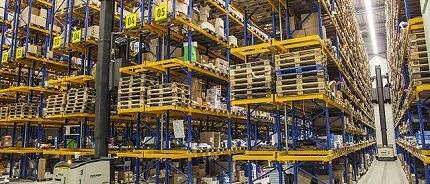FEM 9.831 is a standard for the use of storage and retrieval machines in high-bay warehouses. The standard specifies tolerances, deformations and clearances for storage and retrieval machines in high-bay warehouses. It applies to high-bay warehouses with storage and retrieval machines that
- travel on a rail,
- are supported by a rail,
- mechanically pick up the loads
- and are suitable for handling pallets or similar aids such as pallet cages.
Development of the FEM 9.831
The reason for drawing up this standard was that components of the storage and retrieval machine must comply with certain tolerances in production, assembly and deformation. Only then can they be used in high-bay warehouses. If the clearances are not sufficiently large, the functional safety of the high-bay warehouse cannot be guaranteed. However, the clearances must not be too large either, as otherwise the space will not be optimally utilised or free space will be wasted due to poor planning.
Aim of the standard
The aim of the FEM 9.831 standard document is to define deformations and tolerances for optimising a high-bay warehouse. Dimensioning, production and assembly should be handled economically and should not jeopardise functional safety. According to FEM 9.831, tolerances and deformations can occur in various components of a high-bay warehouse. The following functional components are analysed in the standard:
- Base plate
- Travelling rail
- Guide rail
- Loading unit
- Profile check
- Staging area (centring)
- Storage and retrieval unit
- Rack construction
However, the guideline was drawn up in February 1995 without involving high-bay racking manufacturers. For this reason, it is considered controversial.
You can find more information under Storage and retrieval machines.
Image licence: © Wollschläger Group(CC BY-SA 3.0)
Do you have any questions?
